If you have succumb to the latest carving craze as I have, you won’t get very far without learning how to sharpen the knives.
In this post I will show you how to use an inexpensive leather strop with sharpening compound to give your knives an edge that is literally sharp as a razor. The most surprising thing about the process is how truly easy it is.
Follow along to learn how to sharpen a carving knife.

A carving knife ready to be sharpened.
If you want to learn how to carve and have fun doing it, you must learn to sharpen. Once you’ve done some carving, you’ll notice the symptoms of a dull blade. The shavings aren’t as fine and the surface left behind is not shiny. Keep in mind that a dull knife is a dangerous knife. If you don’t have total control of the blade or have to exert more force than necessary, you are more likely to lose control and cut yourself. Even a dull knife is sharp enough to do serious damage. Plus, if you want to make cuts that leave a high quality finish, your knives have to be as sharp as possible.

Where you see light reflected on the edge of the knife is where the blade has become dull.
Learn about the science of sharpening
Without going too far into the weeds, a sharp edge consists of two planes intersecting at an angle. The more uniform you can make those planes, the more sharpness you will be able to achieve. What you are doing with the leather strop and sharpening compound is smoothing and polishing the two planes. You are re-establishing the edge after it has been damaged in the act of cutting.
I recommend that you learn as much as you can about the science of sharpening. There are great books on the topic, including The Perfect Edge, by Ron Hock.
Pay attention to the edge
As with most cutting tools, the cutting edge of a knife blade is quite delicate. With my carving knife, I can see the least little nicks and dings start to form on the edge from use. Compare the sharp edge to a dull edge frequently. It’s hard to give a formula for how long a blade will stay sharp given different kinds of cuts in different woods, so keep a close eye out for the symptoms I mentioned above.
Use a leather strop
A leather strop is a rough piece of leather attached to a flat piece of wood. It’s about as old school as it gets. Instead of using sharpening stones or sandpaper on a piece of granite, I find that I have much better control of carving knives using a leather strop. As I said earlier, the cutting edges of carving knives are delicate and easy to damage on a stone.
I found an inexpensive leather strop sharpening kit called the Flexcut Knife Strop at Woodcraft, and I’m pleased with how well it works. It includes the leather strop on a piece of wood and sharpening compound.

The Flexcut Knife Strop, a piece of rough leather attached to a flat piece of wood.
Prepare the strop
To prepare your strop for sharpening, first make sure to clean it out with another piece of leather or even a handful of wood shavings. The idea is to rough up the leather so it can accept sharpening compound. The compound, which contains microscopic abrasives, comes either as a paste in a tube or as a stick. Load the leather with compound along the entire length of the strop and out to the edges.
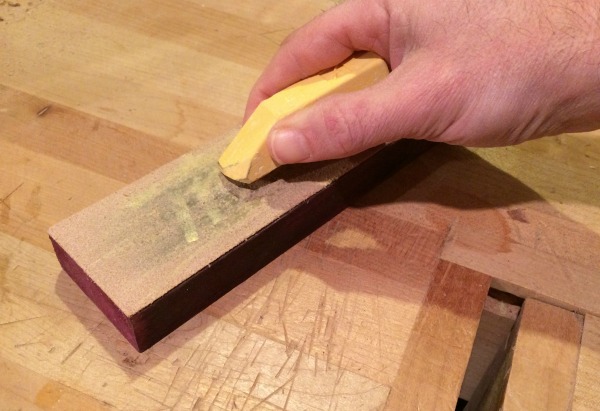
Loading the leather strop with sharpening compound.
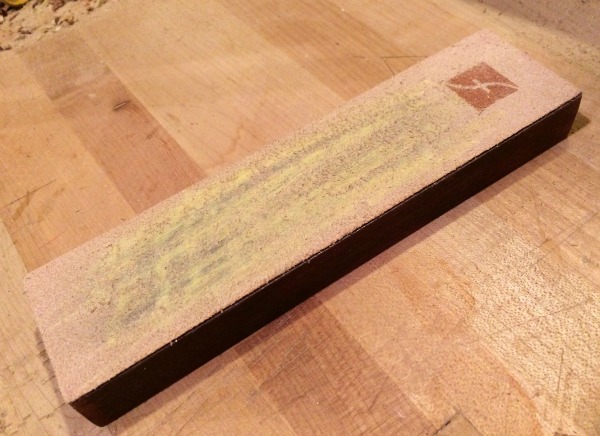
Sharpen the blade
If you are new to this kind of sharpening, I recommend marking the very edge of the blade with ink. This will remind you to focus on the cutting edge and will help you gauge your progress.
Put a piece of wood in a vise or use a bench dog as a stop and push the strop against it. Place the blade on the leather with the sharp edge toward you. Use finger pressure to hold the edge down against the leather and push the blade away from you along the strop in one smooth motion. You will notice black streaks starting to form on the leather. These streaks are made from removing fine amounts of steel from the blade.
Make a stroke along the entire length of the strop and look at your blade. If the ink has been removed, you are finished with that area of the blade. Take additional strokes emphasizing areas that still have ink on them until all the ink is gone, making sure to cover the entire blade from the base to the tip. This should only take a few strokes. Now turn the blade over, mark the edge with ink and do the same process on the other side of the blade, again with the edge pointing toward you.
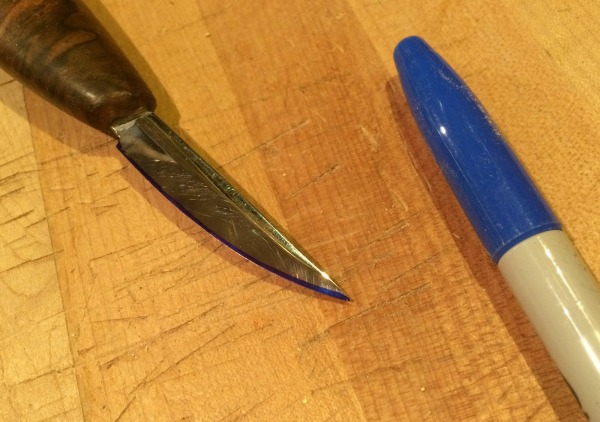
Start by marking the blade with ink to help gauge your progress.
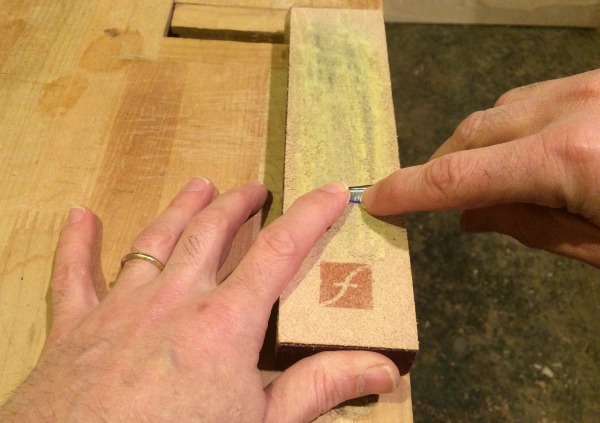
Hold the cutting edge flat against the leather with finger pressure.
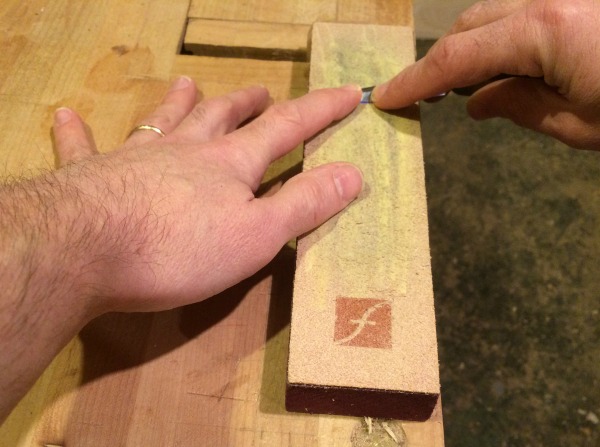
Push the blade in one smooth stroke across the full length of the strop.

The ink shows where you need to continue sharpening.
Check the sharpness
After a few strokes on each side of the blade, you will notice the edge no longer has nicks in it but is a continuous line. You may also notice tiny lines perpendicular to the blade. The finer the compound you use, the more polished the steel will be. There are several ways to check the sharpness of the blade. One is simply to make a cut on a piece of wood. If you can make a fine shaving in end grain, you know the blade is pretty sharp.
Another method is to place the blade flat against your arm and carefully push the blade along your arm. It should shave the hair on your arm like a razor. If you’ve accomplished that level of sharpness, you are ready to continue carving.
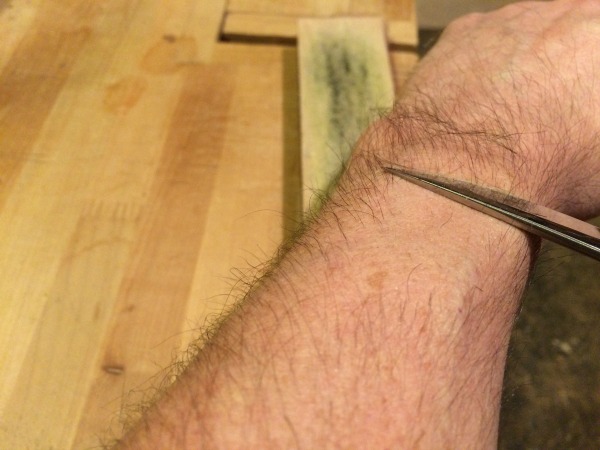
A sharp knife blade should shave your arm like a razor.
Making a blade so sharp that it will shave your arm is satisfying in and of itself. But when you use the blade to cut wood, making translucent wood shavings and leaving a finish so smooth that it shines, you will truly appreciate the skill and art of sharpening and you’ll get great results when carving.

Share tips, start a discussion or ask one of our experts or other students a question.
No Responses to “Keeping Sharp: How to Sharpen a Carving Knife With a Leather Strop”